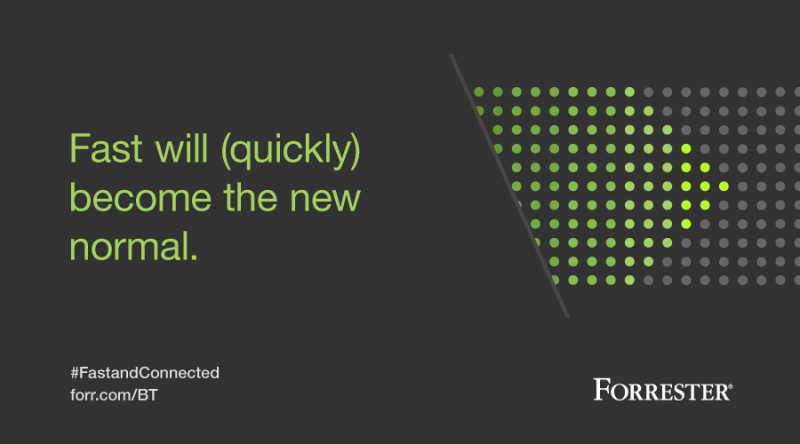Your Business Technology Strategy: Go Fast Or Go Home
CEOs and their leadership teams are at a crossroads as technology underpins virtually all customers’ expectations and unlocks new sources of customer value. The choice is rather straightforward: invest heavily in business technology (BT) to win, serve, and retain customers, or flounder under the weight of legacy IT.
The choice is obvious, isn’t it? We know and have proven that a better customer experience correlates with higher revenue growth. And what firm can claim immunity from the pressure of increasingly powerful customers wielding unbelievable technology power?
This is no time to hedge. Strategies like bimodal IT that advocate for silos and two operating speeds may appeal to risk-averse leaders, but bimodal won’t get the job done. In fact, it works directly against the key operating principles of customer-obsessed firms in B2B and B2C industries like General Electric, Netflix, and USAA. These firms and other leaders use the customer as the central design point for their business technology strategy and strive to be:
Connected. Not siloed. At customer-obsessed firms, silos are giving way to cross-functional teams of sales, marketing, service, production, and technology staff focused on serving customer journeys and desires. The firms necessarily act as a single organism to rapidly sense and respond to changes – at speed. Likewise, systems are integrated and cloud-based to create a connected ecosystem of partners and customers. Bimodal works against this by isolating teams and systems and adding unnecessary complexity.
Fast. Not two speeds. Customer’s expectations are evolving more rapidly than ever before – digital disruptors are built for speed. The faster you execute, the more quickly you will win customers over and more effectively you compete against disruptors.
Bimodal advocates for only part of your organization to move fast, while perpetuating the isolation and glacial pace of change for older, monolithic, operational systems. But customer experiences aren’t confined to a small subset of systems. Even a simple purchase needs to reach back into fulfillment and billing systems. So where do you draw the line? And what happens when the fast and slow teams need to work together?
The long-term complexity and mismatched expectations that bimodal introduces into the organization far outweighs the short-term comfort of a less aggressive approach.
It’s time to go fast; you cannot out-slow the competition. CEOs, business leaders, and CIOs must co-create and prioritize a business technology agenda that centers on customers and spans all corners of the organization. The move to customer-obsession is no longer a choice. Now is the time you must decide what kind of company you will be in order to win.
As 2016 progresses, the urgency to move fast and go big will only increase. For more information on this topic, watch our on-demand webinar with me, Carlton Doty, and John McCarthy “CIOs: Life In The Fast Lane: What It Takes To Move At The Speed Of Customers and Business.”
